Category: BCI
-
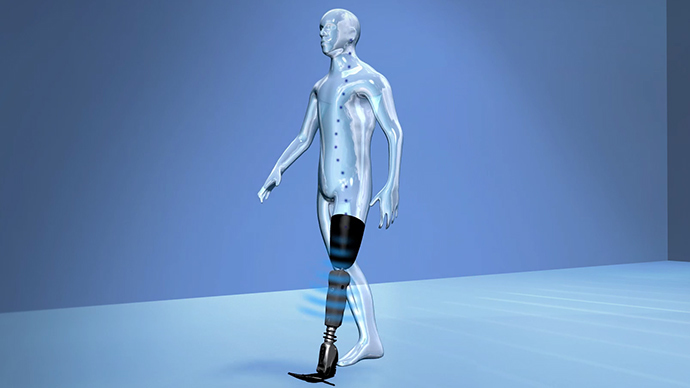
Intent controlled prosthetic foot using myoelectric sensors
Ossur‘s sensor implant allows amputees to control bionic prosthetic limbs with their minds. Myoelectric sensors are surgically placed in residual muscle tissue. Prosthetic movement is triggered via a receiver. Ossur’s existing “smart limbs” are capable of real-time learning and automatically adjust to a user’s gait, speed and terrain. However, conscious thought is still required.…
-

Implant to enable prosthetic sensations
Washington University‘s Daniel Moran has received a DARPA grant to test a device that would stimulate nerves in the upper arm and forearm of prosthetic users. The goal is for the wearer to be able to feel hot, cold, and a sense of touch. In a related development last year, MC10‘s Roozbeh Ghaffari developed artificial skin…
-

Discreet EEG sticker monitors brain activity
University of Illinois professor John Rogers has made another breakthrough in flexible medical electronics. His team has created an EEG system that sticks to the skin behind one’s ear to monitor brain activity. The miniature, lightweight, gold electrode device sticks to the skin without adhesive, and can be worn continuously for 2 weeks. While not yet…
-
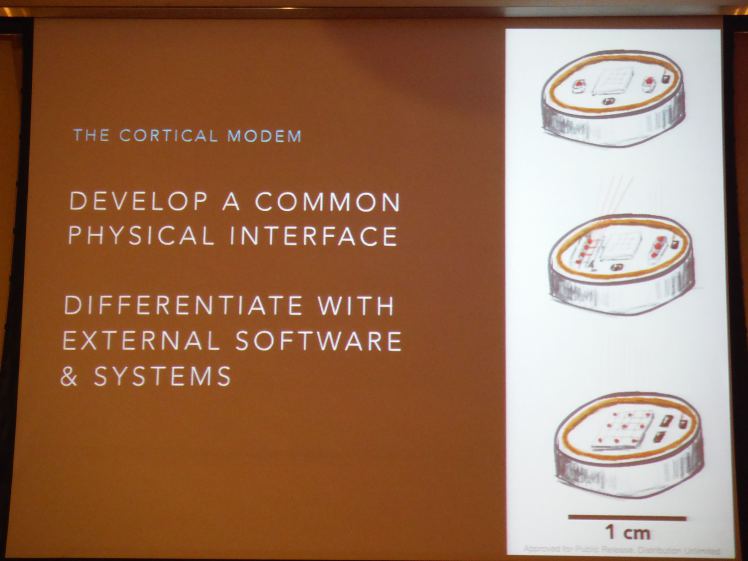
Implant could direct images to visual cortex, restore sight
DARPA is in the early stages of developing a “cortical modem” which would enable a simple visual display via a direct interface to the visual cortex. Its projected cost is 10 US Dollars. The project lead is Dr Phillip Alvelda. It was built on Karl Deisseroth‘s optogenetics research — studying and controlling specified cells within living…
-
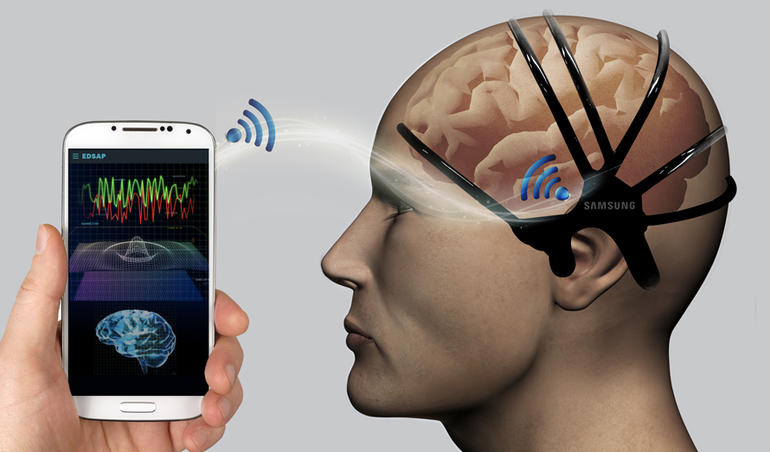
Stroke detecting headset prototype
Samsung’s Early Detection Sensor & Algorithm Package (EDSAP), developed by Se-hoon Lim, is meant to detect early signs of stroke. A multiple sensor headset records electrical impulses in the brain, algorithms determine the likelihood of a stroke in one minute, and results are presented in a mobile app. EDSAP can also analyze stress and sleep patterns, and potentially…
-
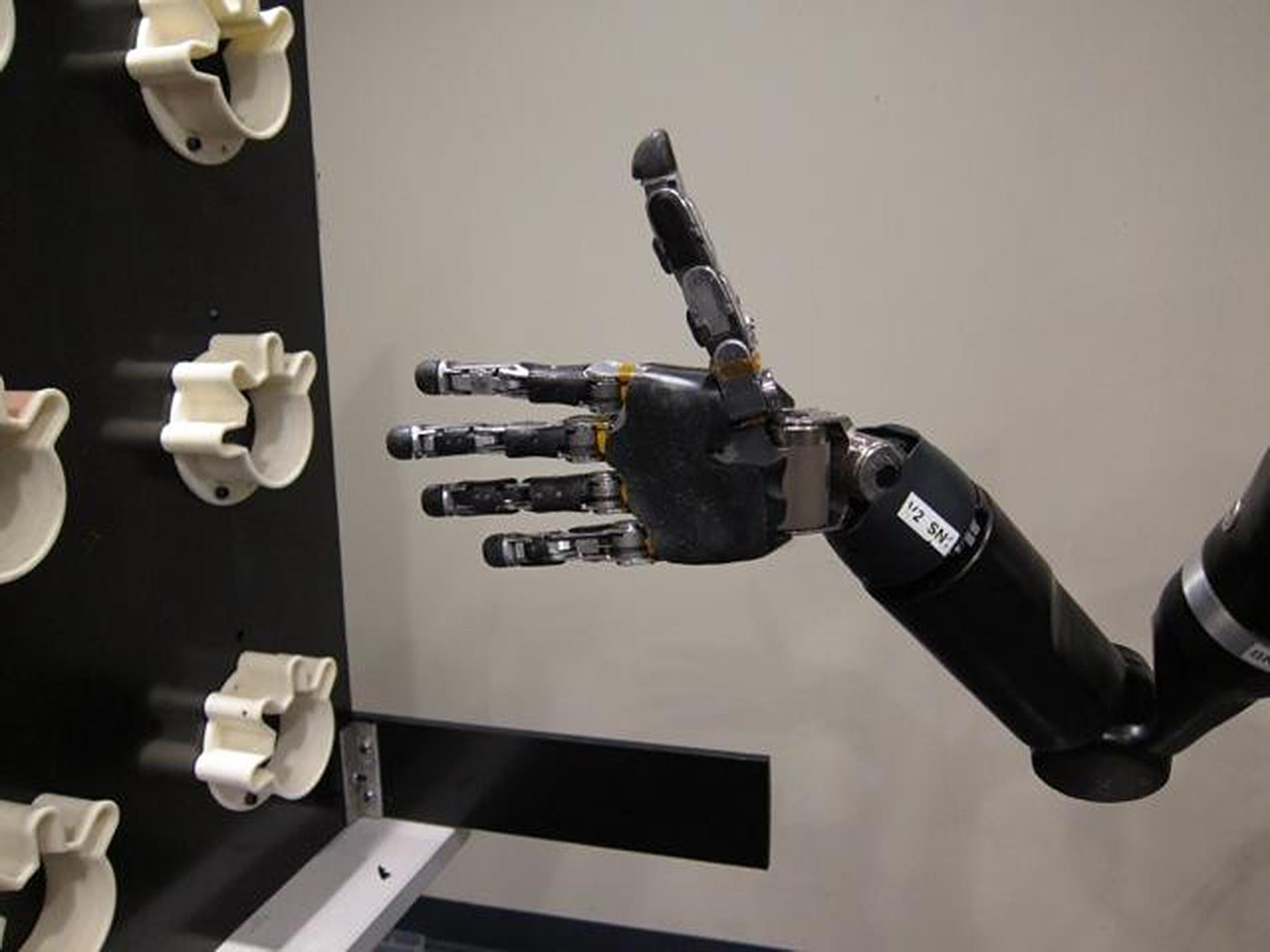
BCI enabled 10-D prosthetic arm control
Jennifer Collinger and University of Pittsburgh colleagues have enabled a prosthetic arm wearer to reach, grasp, and place a variety of objects with 10-D control for the first time. The trial participant had electrode grids with 96 contact points surgically implanted in her brain in 2012. This allowed 3-D control of her arm. Each electrode point picked up signals…
-

NIH “Bionic Man” with 14 sensor and brain controlled functions
The National Institute of Biomedical Imaging and Bioengineering recently launched the “NIBIB Bionic Man,” an interactive Web tool detailing 14 sensor based technologies they are supporting. They include: 1. A robotic leg prosthesis that senses a person’s next move and provides powered assistance to achieve a more natural gate. 2. A light sensitive biogel and…
-
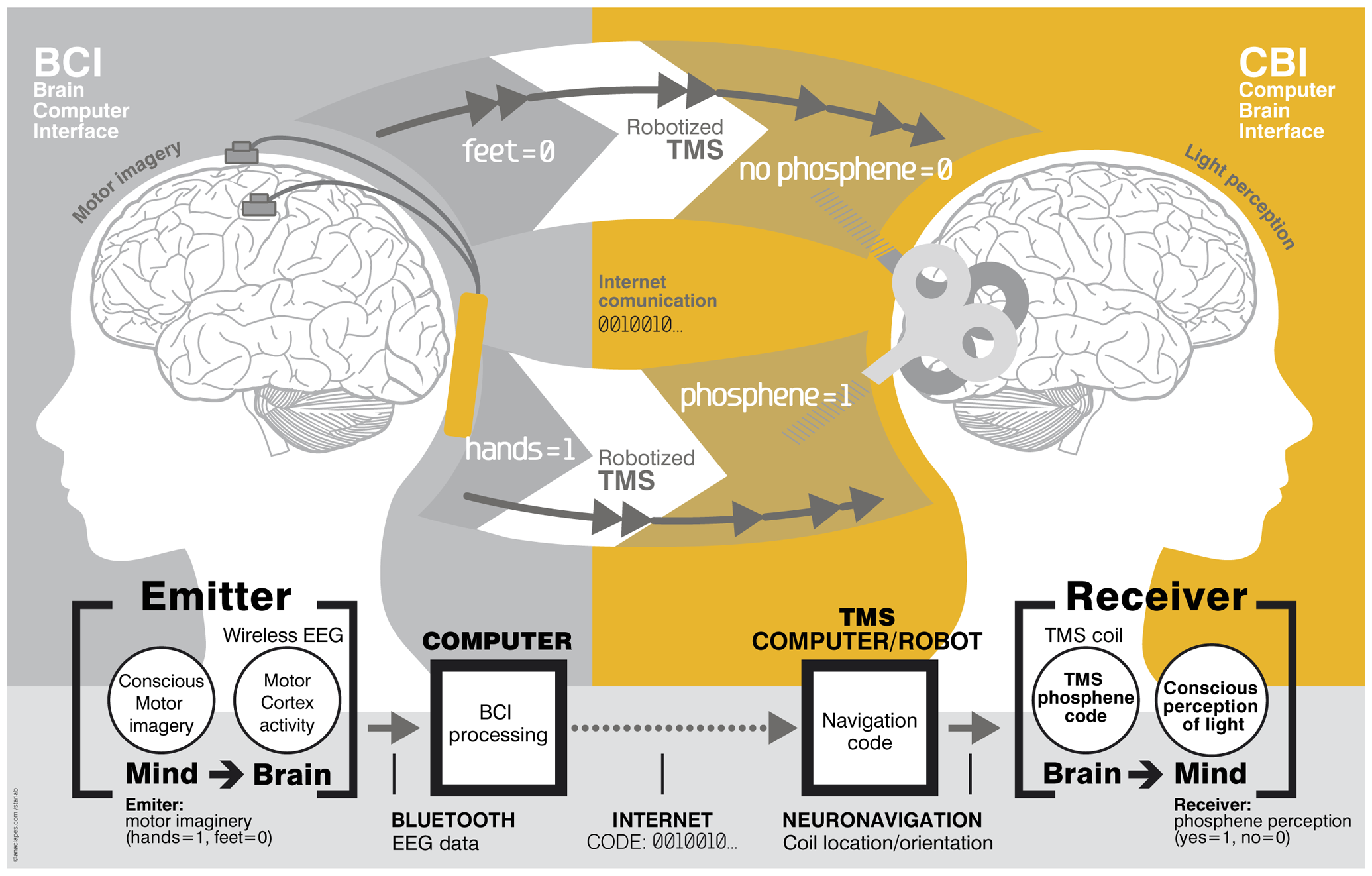
Noninvasive brain-to-brain communication demonstrated
Giulio Ruffini and colleagues at Starlab transmitted the words “hola” and “ciao” in binary code from the brain of a person in India to the brains of three people in France. EEG was used to record the information from the sender’s brain, and robotized transcranial magnetic stimulation was used to deliver the message to the brains…
-

Brain-Computer Interface generated music
At Music Tech Fest in London, multidisciplinary artist Ma Tan won the wearables prize by generating music from his thoughts and heart. He used a 2 electrode EEG headband developed by Tel Aviv and Brown University professor Nathan Intrator to sense his emotions, and a heart monitor to sense his cardiac activity.
-
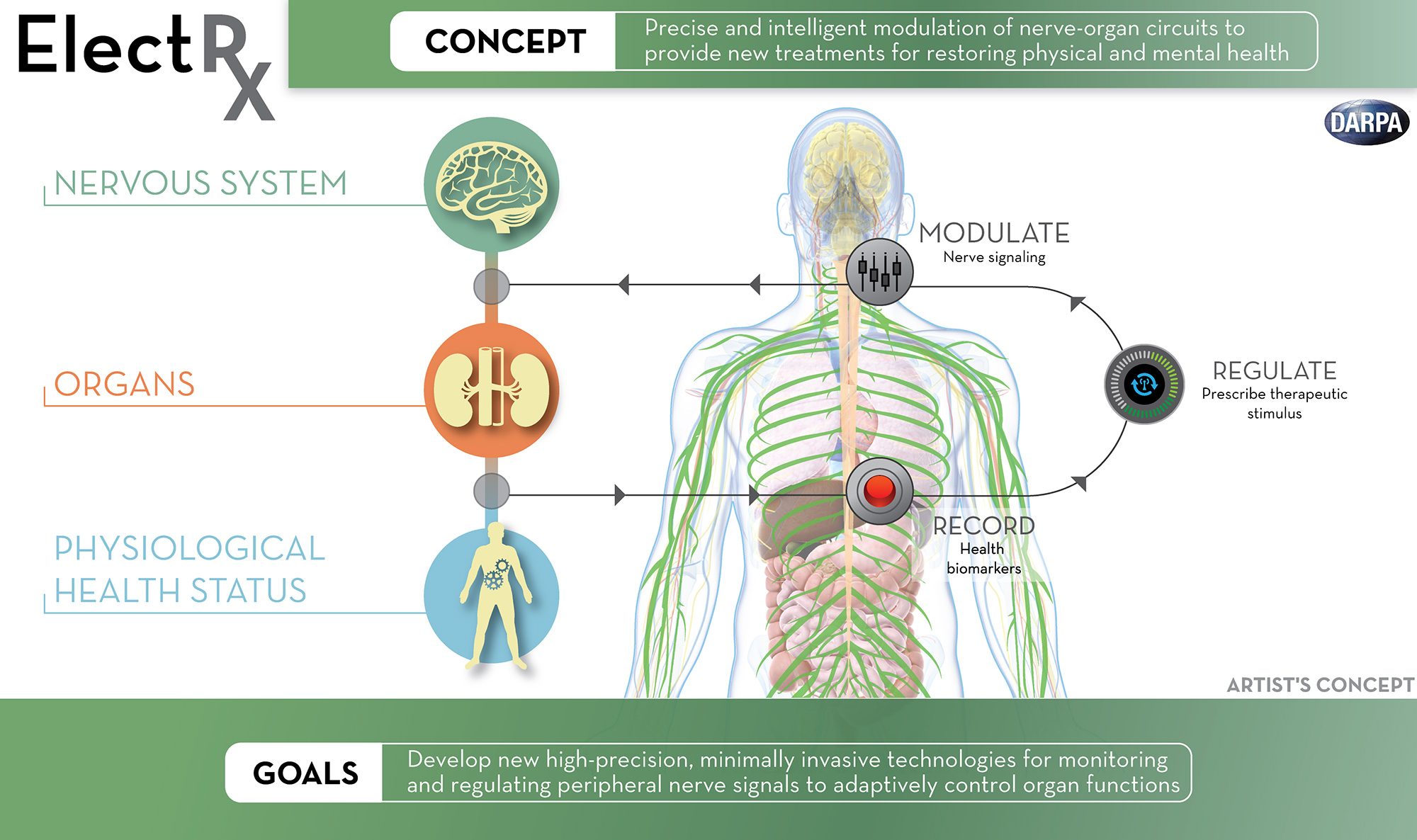
DARPA neuromodulation tech for physical and mental health
DARPA‘s ElectRx research program aims to develop high precision, minimally-invasive neuromodulation technologies to treat diseases including rheumatoid arthritis, epilepsy and PTSD. Implanted ultraminiaturized devices would modulate the peripheral nervous system’s response to infections, injuries or other imbalances. Project manager Doug Weber claims that ElectRX technologies “would continually assess conditions and provide stimulus patterns tailored to help maintain…
-
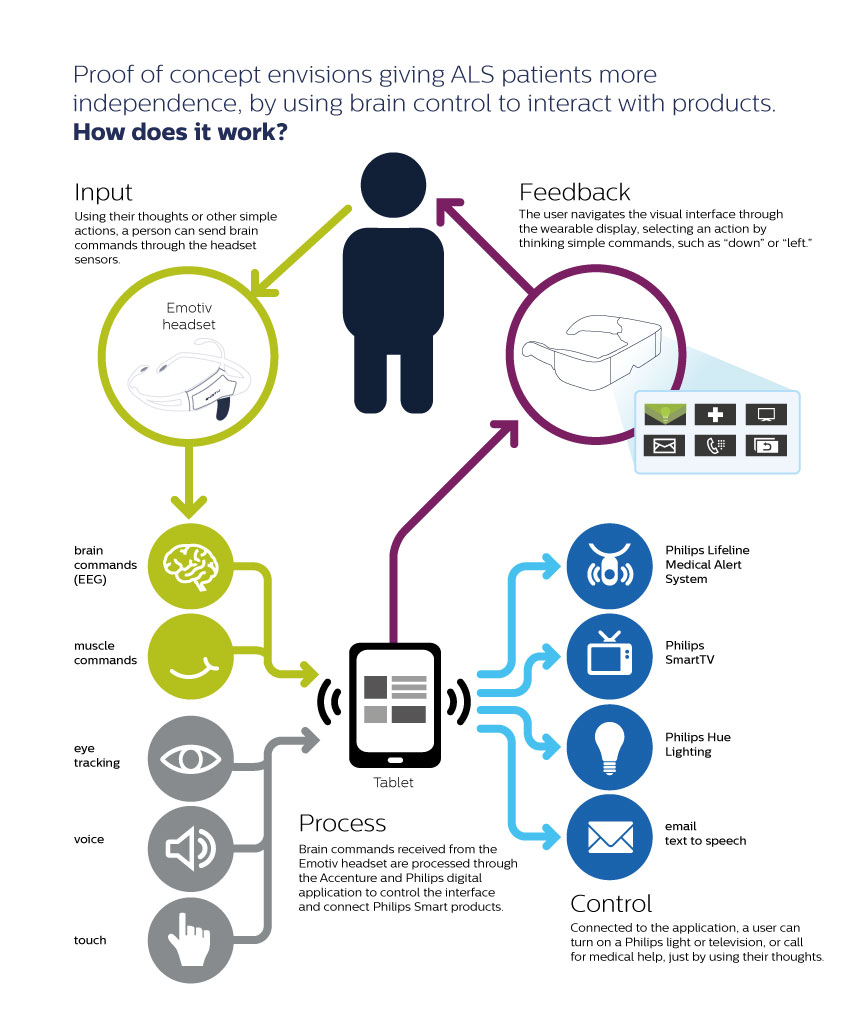
EEG enables ALS patients to control devices, communicate
Philips and Accenture are using EEG brainwaves to help ALS patients command electronic devices via a wearable display, a tablet and software. The system can access a medical alert service, a smart TV and wireless lighting, and communicate via pre-configured messages. The wearable display provides visual feedback that allows the user to navigate the application…
-
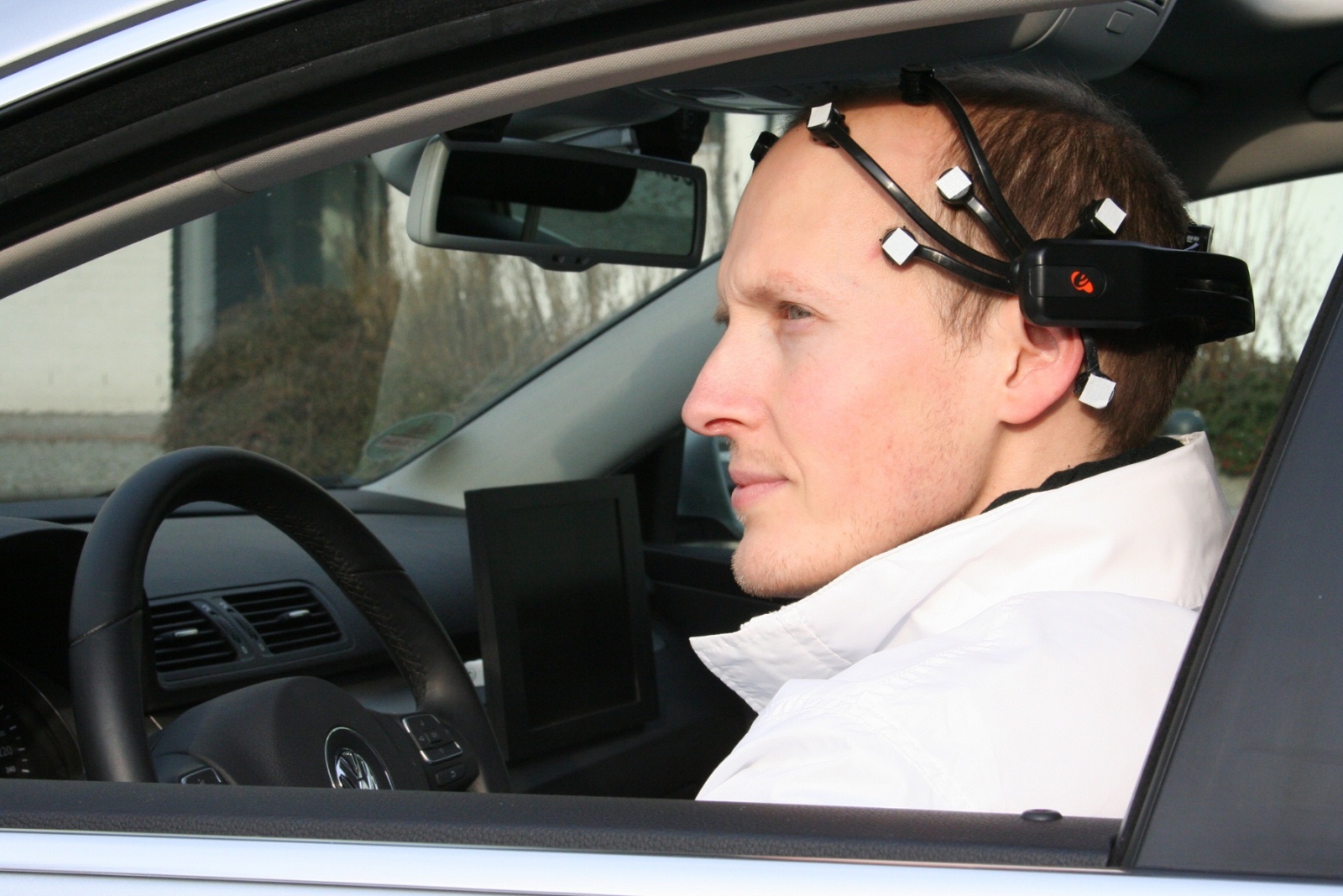
Brain controlled car steers, accelerates, brakes
AutoNOMOS and the Freie Universität Berlin are developing BrainDriver, the first car that steers, accelerates, and brakes based on its driver’s thoughts. In a recent experiment, Henrik Matzke drove a car at speeds up to 31 mph. Neuro-signals are acquired with a commercial EEG tool. After training with virtual objects in the software toolkit, bioelectric signals measured by the wireless…